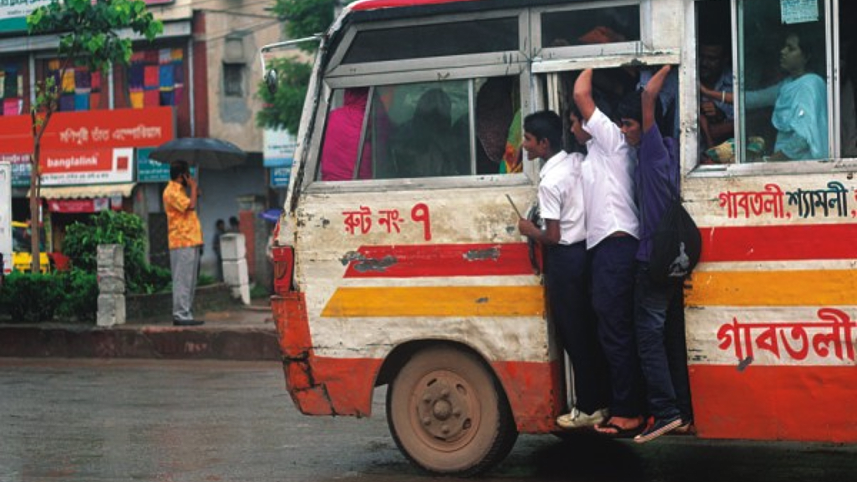How rising bus fares puts students in a fix

Consider this – university students support themselves financially through tuition. After academic fees, rent and savings, they can barely afford the delicacy of personal transportation. Rickshaws are too expensive and ride sharing is out of the equation. Buses end up being the most reliable commute for our youth.
With the recent hike of bus fares, students will have to reevaluate their options. Travelling from their home to university, from one tuition to another, buses are the sole choice for students who are usually on a budget. If you consider the return trip, a mere 23 percent hike in fuel price imposes dire consequences.
For a school/college student, the stakes are higher, considering the fact that many of them have to manage within the limited amount of pocket money allotted to them. Increased bus fares means that the already large chunk of their pocket money that is spent on transportation is about to get larger. This limits their scope of saving up and spending on their hobbies, get-togethers and other recreational activities. Given the pressure intensive nature of education these days, a reduction in leisure activities could result in deteriorating mental health conditions, in a city where recreation for young people is already too expensive, if at all available. For middle class families especially, increasing their children's pocket money might spell trouble, and many families will choose to forego this necessity.
Although a 28 percent hike on bus fare was agreed upon initially, buses are already charging 50 percent more. Minimum 15 taka is charged even on the shorter trips within the city. For instance, a student of Notre Dame College (located in Motijheel) who lives in Uttara has buses and trains as affordable options. Previously, buses such as Balaka or Gazipur Paribahan would charge around BDT 40, which has now shifted to BDT 60. This increase of mere BDT 20 ends up being 40 with the return trip. At the end of the month, this student would have to spend around 1000 taka more just travelling from home to college and back. This leaves him with the option of dangling out of a moving train from Kamalapur to Airport Station, which is unsafe and problematic for different reasons altogether.
What is crucial is to comprehend the overall impact of this fare hike on different aspects of our youths' lives, not only on how they choose to commute but on how they choose to manage their finances as well. With the fare hike, they have to choose to walk in an already un-walkable city. While it might be a manageable option for some, students living a long distance away from their institutions have no other alternatives left. Buses, charging 50 percent more, are still the cheapest options.
Most buses don't offer reduced fares to students anymore. Instructing bus companies to maintain "half passes" for students with ID cards can be a feasible solution. With the metro rail going into service next year, the scenario is hopefully going to be reshaped. If it's affordable enough, students will have another efficient option available, even if it's just one metro line servicing one specific route within the city.
Travelling by local bus in itself is risky, considering both health and road safety issues. Yet, keeping the expense in mind, students have to use these unfit local buses on a regular basis. A hike of bus fares in a post-Covid "back to school" period like this puts students in a difficult position, caught between a rock and a hard place.
Reference
1. The Daily Star (November 9, 2021). Bus Fare Hike In Dhaka, Ctg; On paper 28pc, on roads 50pc.
Remind Ifti to be quieter at hasiburrashidifti@gmail.com
 For all latest news, follow The Daily Star's Google News channel.
For all latest news, follow The Daily Star's Google News channel.